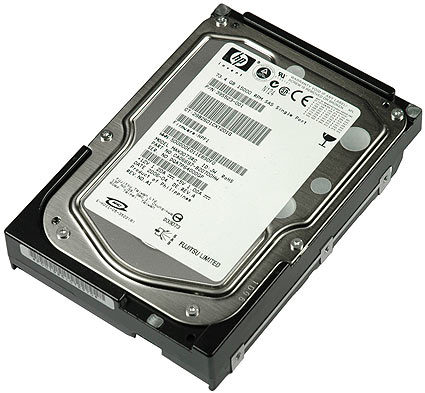The Server Primer, Part 1
Hard Drives
Hard drives are a very interesting area when it comes to servers and workstations. Some years ago, hard drives using the Small Computer System Interface (SCSI) at 10,000 RPM and 15,000 RPM were considerably faster than 7,200 RPM consumer or desktop hard drives. They still are quicker, but the difference isn’t that considerable any more.
The professional storage market is splitting into three segments. High capacity requirements are addressed by conventional 3.5" Serial ATA hard drives that are modified and validated to be suitable for 24/7 operation. The performance segment tries to fit into acceptable physical dimensions, which is why we’re seeing more and more 2.5" high-performance hard drives with 10,000 RPM and the Serial Attached SCSI (SAS) interface. High-performance systems still rely on SCSI or SAS hard drives at 15,000 RPM.
Server/workstation hard drives usually require active cooling, as they’re optimized for maximum reliability and performance. All professional hard drives come with a warranty of five years.
Power Supply
Power supplies for professional systems are fine-tuned for reliability. Every decent power supply can bridge a single, missing phase, but the professional ones typically can handle worse. Some products offer a level of surge protection, but that starts to overlap into the area typically covered by uninterruptible power supply (UPS) battery backup units.
Professional power supplies are modular and offer redundancy in the form of two modules that can each provide the necessary power for the system. This means that the system will still be adequately powered if one module of power supply becomes broken.
Join our discussion on this topic
Get Tom's Hardware's best news and in-depth reviews, straight to your inbox.

Patrick Schmid was the editor-in-chief for Tom's Hardware from 2005 to 2006. He wrote numerous articles on a wide range of hardware topics, including storage, CPUs, and system builds.

